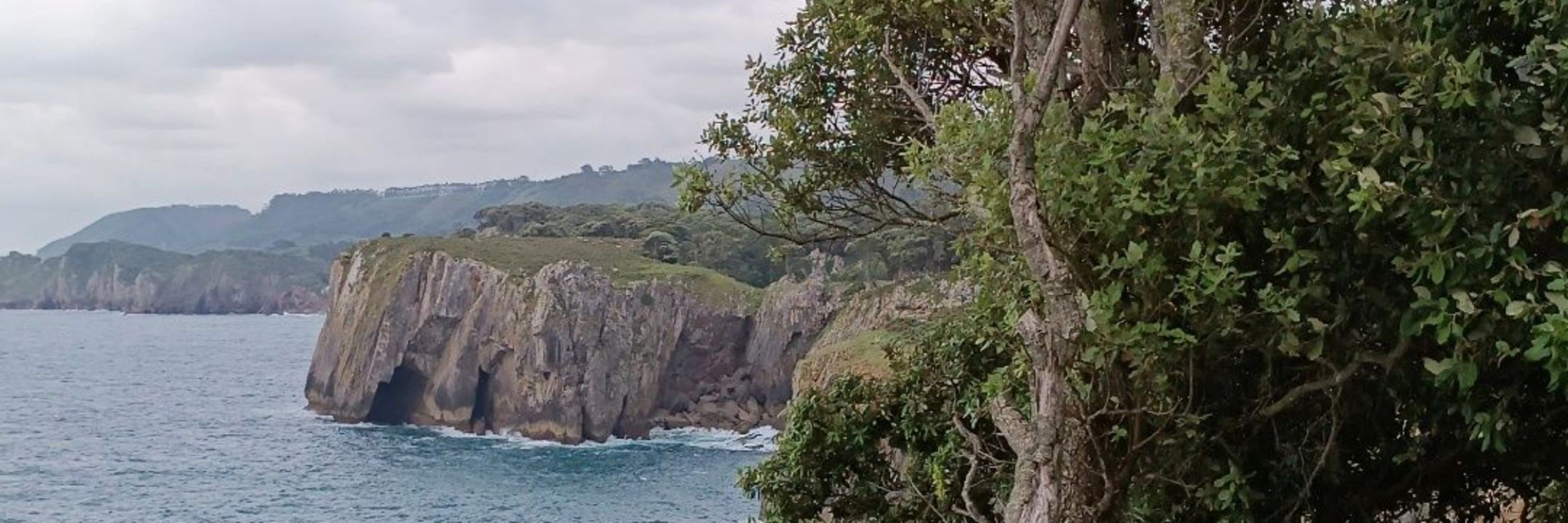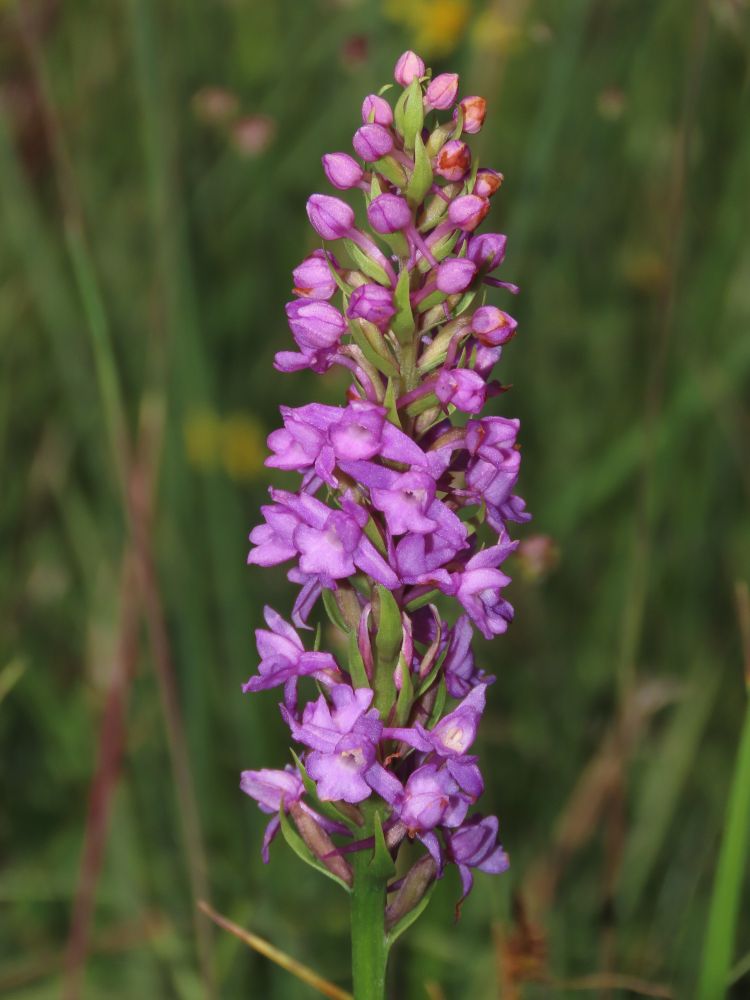
Víctor González-García
@gonzalezgvictor.bsky.social
🌿 Asturies 🌳 PhD at IMIB-UniOvi 🌲 Atlantic Botanical Garden of Gijón/Xixón 🌾 Botanist 🌱
https://www.researchgate.net/profile/Victor-Gonzalez-Garcia-2
https://www.researchgate.net/profile/Victor-Gonzalez-Garcia-2
Our results suggest that city biodiversity can be enhanced by passive rewilding of managed park lawns, non-intervention on residential vacant lots, direct restoration of industrial vacant lots, and conservation of natural and agricultural habitat remnants as sources of native species.




October 10, 2025 at 8:53 AM
Our results suggest that city biodiversity can be enhanced by passive rewilding of managed park lawns, non-intervention on residential vacant lots, direct restoration of industrial vacant lots, and conservation of natural and agricultural habitat remnants as sources of native species.
We used the NMDS to calculate a compositional novelty index, using the distance from each of the urban plots to the centroid of the two reference pre-urban habitats.
Novelty was found higher when compared to forests than to meadows and also found higher for plants than for fungi and bacteria.
Novelty was found higher when compared to forests than to meadows and also found higher for plants than for fungi and bacteria.

October 10, 2025 at 8:53 AM
We used the NMDS to calculate a compositional novelty index, using the distance from each of the urban plots to the centroid of the two reference pre-urban habitats.
Novelty was found higher when compared to forests than to meadows and also found higher for plants than for fungi and bacteria.
Novelty was found higher when compared to forests than to meadows and also found higher for plants than for fungi and bacteria.
We tested the hypothesis that cities are composed of different degrees of ecological novelty by studying four urban (parks, roadsides, and residential and industrial lots) habitats with differing degrees of management and human legacy and two natural ones (hay meadows and forests).


October 10, 2025 at 8:53 AM
We tested the hypothesis that cities are composed of different degrees of ecological novelty by studying four urban (parks, roadsides, and residential and industrial lots) habitats with differing degrees of management and human legacy and two natural ones (hay meadows and forests).
During the last day of the conference we visited one of the last Abies pinsapo forests, a tree endemic only to Málaga and Cadiz in Southern Spain.
Also we were able to visit the Botanical Garden El Castillejo, where Abies pinsapo and other endangered plants are reproduced for their conservation.
Also we were able to visit the Botanical Garden El Castillejo, where Abies pinsapo and other endangered plants are reproduced for their conservation.


September 30, 2025 at 1:15 PM
During the last day of the conference we visited one of the last Abies pinsapo forests, a tree endemic only to Málaga and Cadiz in Southern Spain.
Also we were able to visit the Botanical Garden El Castillejo, where Abies pinsapo and other endangered plants are reproduced for their conservation.
Also we were able to visit the Botanical Garden El Castillejo, where Abies pinsapo and other endangered plants are reproduced for their conservation.
This research represents the most profound study of the family Orchidaceae in Asturias, which can be qualified as an European hotspot for orchids
@sebot.bsky.social
@sebicop.bsky.social
@jovenesbotanica.bsky.social
@uodivulga.bsky.social
@imibasturias.bsky.social
@natusferaes.bsky.social
@gbif.es
@sebot.bsky.social
@sebicop.bsky.social
@jovenesbotanica.bsky.social
@uodivulga.bsky.social
@imibasturias.bsky.social
@natusferaes.bsky.social
@gbif.es

September 13, 2025 at 8:58 AM
This research represents the most profound study of the family Orchidaceae in Asturias, which can be qualified as an European hotspot for orchids
@sebot.bsky.social
@sebicop.bsky.social
@jovenesbotanica.bsky.social
@uodivulga.bsky.social
@imibasturias.bsky.social
@natusferaes.bsky.social
@gbif.es
@sebot.bsky.social
@sebicop.bsky.social
@jovenesbotanica.bsky.social
@uodivulga.bsky.social
@imibasturias.bsky.social
@natusferaes.bsky.social
@gbif.es
As expected, most Asturian orchids were found to prefer open and sunny spaces, (i.e., grasslands, shrubalnds), with only a few growing on shady forests.
Yet, soil pH was found as one of the main drivers in their distribution, as their diversity decreases eastwards, where acid soils are dominant.
Yet, soil pH was found as one of the main drivers in their distribution, as their diversity decreases eastwards, where acid soils are dominant.

September 13, 2025 at 8:58 AM
As expected, most Asturian orchids were found to prefer open and sunny spaces, (i.e., grasslands, shrubalnds), with only a few growing on shady forests.
Yet, soil pH was found as one of the main drivers in their distribution, as their diversity decreases eastwards, where acid soils are dominant.
Yet, soil pH was found as one of the main drivers in their distribution, as their diversity decreases eastwards, where acid soils are dominant.
Thus, we have determined that in Asturias we can find, at least, 52 confirmed species, more than all of Portugal, and 13 hybrids.
Some of these taxa were recorded for the first time for the region, such as Ochis spitzelii, Ophrys lutea, O. speculum or Gymnadenia conopsea.
Some of these taxa were recorded for the first time for the region, such as Ochis spitzelii, Ophrys lutea, O. speculum or Gymnadenia conopsea.




September 13, 2025 at 8:58 AM
Thus, we have determined that in Asturias we can find, at least, 52 confirmed species, more than all of Portugal, and 13 hybrids.
Some of these taxa were recorded for the first time for the region, such as Ochis spitzelii, Ophrys lutea, O. speculum or Gymnadenia conopsea.
Some of these taxa were recorded for the first time for the region, such as Ochis spitzelii, Ophrys lutea, O. speculum or Gymnadenia conopsea.
In addition to our own fieldwork, we have collected many records from other sources, such as different herbaria, scientific literature, social media, and of course, citizen science platforms such as @inaturalist.bsky.social where we have created our own project:
www.inaturalist.org/projects/orq...
www.inaturalist.org/projects/orq...

Orquídeas de Asturias
En este proyecto se recopilarán todas las orquídeas silvestres presentes en el Principado de Asturias. El proyecto está mantenido por el Laboratorio de Vegetación y Biodiversidad de la Universidad de ...
www.inaturalist.org
September 13, 2025 at 8:58 AM
In addition to our own fieldwork, we have collected many records from other sources, such as different herbaria, scientific literature, social media, and of course, citizen science platforms such as @inaturalist.bsky.social where we have created our own project:
www.inaturalist.org/projects/orq...
www.inaturalist.org/projects/orq...
These findings highlight the importance of considering phenology of invasive and native species in prediction, early response and management of biological invasions.
@sebot.bsky.social @imibasturias.bsky.social @jovenesbotanica.bsky.social @invaplant.bsky.social @uodivulga.bsky.social
@sebot.bsky.social @imibasturias.bsky.social @jovenesbotanica.bsky.social @invaplant.bsky.social @uodivulga.bsky.social
June 12, 2025 at 8:27 PM
These findings highlight the importance of considering phenology of invasive and native species in prediction, early response and management of biological invasions.
@sebot.bsky.social @imibasturias.bsky.social @jovenesbotanica.bsky.social @invaplant.bsky.social @uodivulga.bsky.social
@sebot.bsky.social @imibasturias.bsky.social @jovenesbotanica.bsky.social @invaplant.bsky.social @uodivulga.bsky.social
This temporal mismatch could allow invasive plants to avoid direct competition during key periods of their life cycle.
Also, a prolonged flowering might confer a competitive advantage to invaders by maximizing the access to resources when most native plants have completed their reproductive cycle.
Also, a prolonged flowering might confer a competitive advantage to invaders by maximizing the access to resources when most native plants have completed their reproductive cycle.




June 12, 2025 at 8:27 PM
This temporal mismatch could allow invasive plants to avoid direct competition during key periods of their life cycle.
Also, a prolonged flowering might confer a competitive advantage to invaders by maximizing the access to resources when most native plants have completed their reproductive cycle.
Also, a prolonged flowering might confer a competitive advantage to invaders by maximizing the access to resources when most native plants have completed their reproductive cycle.
We have found that invasive species display a delayed and longer flowering phenology when compared to native species, especially those invaders from temperate and tropical occurring in man-made habitats.

June 12, 2025 at 8:27 PM
We have found that invasive species display a delayed and longer flowering phenology when compared to native species, especially those invaders from temperate and tropical occurring in man-made habitats.
In this study we have compared the flowering start, ending and duration of invasive against native plants co-occurring at the same elevations in the Cantabrian Mixed Forests Ecoregion, taking into account also the habitat where they grow and their climatic and geographic origin.

June 12, 2025 at 8:27 PM
In this study we have compared the flowering start, ending and duration of invasive against native plants co-occurring at the same elevations in the Cantabrian Mixed Forests Ecoregion, taking into account also the habitat where they grow and their climatic and geographic origin.
Some of them need to be checked in the lab to be sure of the species, like Dryopteris aemula, characterized by its glandular sori, or Cystopteris diaphana (= D. viridula), with a quite peculiar ornamentation in its spores.




June 5, 2025 at 7:02 PM
Some of them need to be checked in the lab to be sure of the species, like Dryopteris aemula, characterized by its glandular sori, or Cystopteris diaphana (= D. viridula), with a quite peculiar ornamentation in its spores.
Some of these ferns can become dominant and create their own communities, like the huge Woodwardia radicans or Culcita macrocarpa.
However, other species are rarer and must be sought in very specific refugia, like Vandenboschia speciosa of Hymenophyllum tunbrigense, which grow in very humid walls.
However, other species are rarer and must be sought in very specific refugia, like Vandenboschia speciosa of Hymenophyllum tunbrigense, which grow in very humid walls.




June 4, 2025 at 9:02 PM
Some of these ferns can become dominant and create their own communities, like the huge Woodwardia radicans or Culcita macrocarpa.
However, other species are rarer and must be sought in very specific refugia, like Vandenboschia speciosa of Hymenophyllum tunbrigense, which grow in very humid walls.
However, other species are rarer and must be sought in very specific refugia, like Vandenboschia speciosa of Hymenophyllum tunbrigense, which grow in very humid walls.

